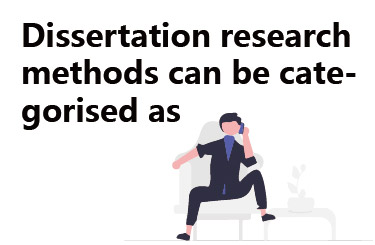Family members, listen to me.
There are thousands of research methods, but choosing the right one is crucial.
Qualitative research methods and quantitative research methods are two major categories.
1. Qualitative Research Methods
Analysing non-digital data, mainly through literature, case studies, interviews and other methods, so as to draw conclusions. They are suitable for exploring complex issues such as human behaviour and social phenomena, and can provide in-depth information and analysis.
2. Quantitative Research Methods
Processing and analysing digitised data, and drawing conclusions through mathematical models, statistical analysis and other means. The method is suitable for exploring the patterns and trends of large amounts of data and can provide objective data and information.
The following describes the application of each research method:.
1. Questionnaire Survey Method
A questionnaire is prepared to ask respondents a series of questions to collect their opinions and views. This method is suitable for surveying a large number of respondents and providing a quick and accurate understanding of their views and attitudes. The process of preparing the questionnaire, the selection of respondents, the distribution and recovery of the questionnaire, and the processing and analysis of data can be described in detail.
2. Experimental method
Through human intervention on the experimental subjects, their responses are observed and data are analysed. This method is suitable for exploring causality and testing hypotheses, which can control the experimental conditions and improve the reliability of the research. When writing the thesis, describe in detail the steps of setting up the experiment, selecting the experimental subjects, controlling the experimental conditions, collecting and analysing the data.
3. Case study method
Conduct an in-depth research through specific cases. This method is suitable for exploring the deep-rooted causes and solutions of specific problems, which can provide specific empirical data and case analysis. Detailed description of the selection of cases, case analysis methods, data collection and analysis and other steps.
4. Literature method
Through the review of literature, data and other leek digitised information. This method is suitable for exploring the history, theory, policy and other aspects of the problem, can provide a wide range of literature and analysis. Detailed description of the selection of literature, literature analysis methods, data collection and analysis and other steps.
5. Interview Method
To understand the perceptions and attitudes of the interviewees through face-to-face interaction with the interviewees.
This method is suitable for exploring the views and experiences of individuals and can provide in-depth information and analysis. Describe in detail the steps of interviewing subjects, interviewing methods, data collection and analysis.
6. Observation Method
By observing and recording phenomena.
The method is suitable for exploring natural and social phenomena and can provide objective data and information. When writing the paper, describe in detail the object of observation, the method of observation, the collection and analysis of data and other steps.
7. Internet Investigation Method
Through digital platforms such as the Internet, respondents are asked a series of questions to collect their opinions and views. This method is suitable for surveying a large number of respondents and can provide a quick and accurate understanding of respondents’ views and attitudes. Describe in detail the steps involved in the design of an online survey, selection of respondents, preparation and distribution of questionnaires, processing and analysis of data.
8.Mathematical Modelling
Refers to an abstracted expression that describes a problem in the real world in mathematical terms:straight and symbols. In marketing, mathematical models can be used to describe market demand, price changes, sales forecasts and other problems. The paper can describe in detail the process of constructing the mathematical model, the meaning of each variable in the model, the assumptions and limitations of the model, the method of solving the model and the results, and so on.
9.Statistical Analysis
Refers to the statistics and analysis of data. In marketing, statistical analysis can be used to deal with market research data, analyse market trends, evaluate market effects and other issues. For the dissertation, the methods of statistical analysis, collection and processing of data, analysis and interpretation of data, etc. can be described in detail.
!!! Points to note are.
1. different research questions and objectives require different research methods:.
2. the reliability and validity of research methods are based on a large amount of data and empirical research results for analysis and inference.
Therefore, the source and quality of data need to be considered when choosing research methods to avoid inaccurate or inaccessible data.
3. Different research methods have different advantages, disadvantages and scope of application.
When selecting research methods, they need to be thoroughly evaluated and compared in order to determine the most suitable method for the research question and purpose.
4. The operational procedures and steps of the research method should be described in detail in the dissertation, including the steps of data collection, processing, analysis and interpretation, so as to ensure the reproducibility and verifiability of the research process.
5. Different research methods have different limitations and generalisability.
The limitations and generalisability of the research methods need to be explained and assessed in the thesis to avoid over-promoting the research results or misleading the readers.




